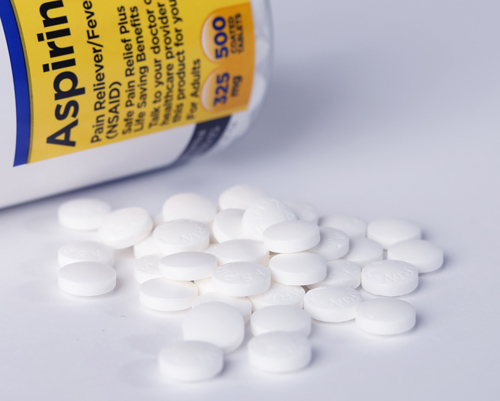Three factors put all trauma patients at increased risk for hospital-acquired deep venous thromboembolism (DVT), or blood clots in the veins that cause disability or death. Those factors are 1) their injuries, 2) increased clotting, and 3) lack of movement during recovery.
The current standard practice is for nearly all orthopaedic trauma patients to receive an injection of low molecular weight heparin (LMWH), a type of medication that counteracts clotting to decrease DVTs or pulmonary emboli.

According to a study published recently in the New England Journal of Medicine, for which Vanderbilt University Medical Center enrolled one-third of the 12,211 patients, aspirin costs less, is easier to administer than LMWH, and is just as effective.
Done in collaboration with VUMC’s Orthopaedic Trauma service and the Vanderbilt Trauma team, the prospective randomized trial, called PREVENT CLOT, involved patients 18 years and older who had surgery for an extremity fracture or had a pelvic fracture.
“In these patients, we found no differences in death from all causes, pulmonary embolism or evidence of a deep vein thrombosis between patients who took 81 milligrams of aspirin two times a day or 30 milligrams of low molecular weight heparin twice a day,” said William Obremskey, MD, MPH, division director of Orthopaedic Trauma Research. “Low molecular weight heparin has a significant cost. If this practice is adopted, the expense would be a huge savings for hospital systems, insurance companies and patients.”
For VUMC, this could be a significant cost savings.
“To Vanderbilt’s credit, we have always provided DVT prophylaxis to patients who could not afford or did not have insurance for low molecular weight heparin for blood clot prevention after injury or surgery upon discharge,” Obremskey says.
PREVENT CLOT, which was funded by the Patient Centered Outcomes Research Institute (PCORI), is the largest study conducted by Major Extremity Trauma Research Consortium (METRC).
This four-year study spanned the pandemic. When many other enrolling centers had to shut down, VUMC altered practices to safely educate, enroll and follow patients.
Obremskey credits Vanderbilt Orthopaedic Trauma research team leader Karen Trochez, MLAS, and Oscar Guillamondegui, MD, MPH, co-principal investigator and professor and chief of the division of Acute Care Surgery.
“The Vanderbilt Trauma and Orthopaedic Trauma patient care teams and clinic research team all deserve a huge amount of credit for our ability to do this study,” Obremskey says. “Our center had greater than 90% of patients attain final follow-up. We also had the highest accrual of patients who were eligible and subsequently enrolled.”
These study results can improve patient comfort, compliance and decrease costs with equal efficacy of preventing DVTs and deaths.
“This is a truly clinic practice-changing study that will simplify and improve the care of the trauma-injured patient worldwide,” said Rick W. Wright, MD, the Dan Spengler, MD Professor and chair of the Department of Orthopaedic Surgery.
“In true VUMC collaborative fashion, multiple surgeons participated in the study, including Drs. Daniel Stinner, Manish Sethi, Robert Boyce, Alex Jahangir and Phillip Mitchell. I could not be happier for the group.”












